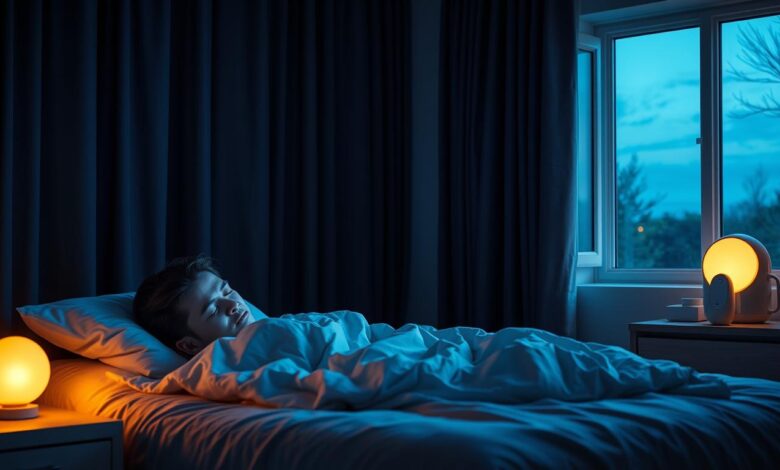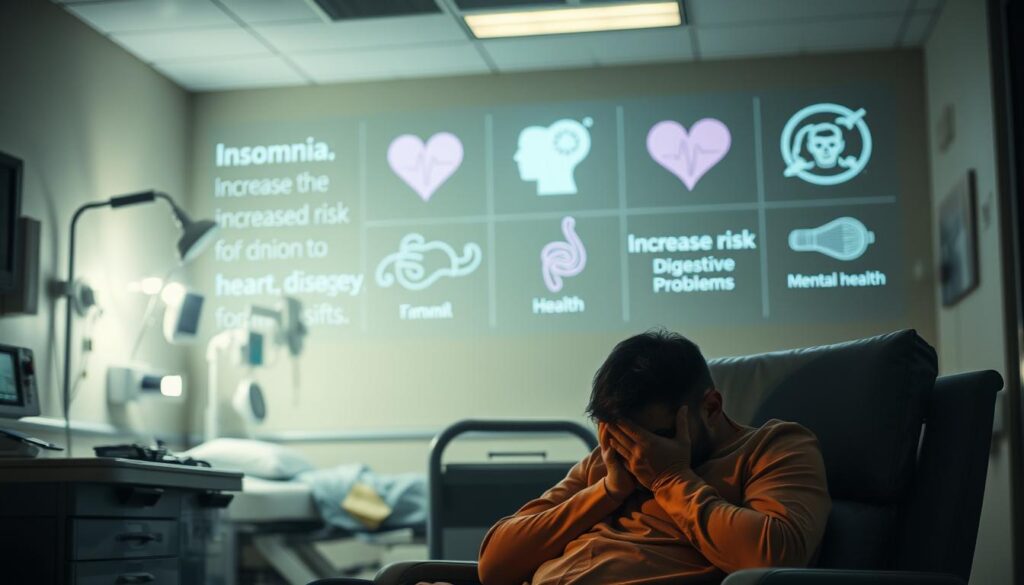
As a night-shift student, managing your sleep schedule is key to doing well in school. Working at night and studying when most people sleep is tough. But, with the right approach, you can do great.
Night-shift students deal with special challenges like disrupted circadian rhythms and social isolation. Yet, by optimizing your sleep, you can get sharper, feel more energetic, and be healthier overall.
By sticking to healthy sleep habits, you can handle the tough parts of night-shift work and school. This article will share useful tips and strategies for your sleep schedule. It’s all about helping you succeed as a night-shift student.
The Unique Challenges of Night-Shift Students
Night-shift students face special challenges that affect their health and school success. Their work hours don’t match up with school and social life. This makes it hard to keep a balanced life.
Balancing Academic Demands with Unconventional Work Hours
Managing school and work is a big challenge for night-shift students. Managing time effectively is key. They have to fit in classes, homework, and studying around their night jobs. This can cause increased stress levels and burnout.
Good time management strategies and talking to professors can help. Using digital tools and keeping professors updated can keep night-shift students on track with school.
The Biological Impact of Reversed Sleep Patterns
Working nights and sleeping days has big health effects. It can cause sleep disorders, digestive problems
Not getting sunlight can also lead to vitamin D deficiency. Night-shift students need to eat well and exercise to stay healthy.
Understanding Your Circadian Rhythm
Knowing your circadian rhythm is key for night-shift students to sleep better. It’s like an internal clock that controls when you’re awake and asleep. It affects many body functions.
The National Sleep Foundation says, “The circadian rhythm is made by a complex system in the brain and body.”
“The suprachiasmatic nucleus (SCN), a small group of cells in the hypothalamus, responds to light and dark signals from the environment to synchronize the physiological functions of the body with the 24-hour day-night cycle.”
How Your Body’s Internal Clock Works
The circadian rhythm is controlled by the SCN. It responds to light. When light hits the eye, it tells the SCN to keep the body’s functions in sync with day and night.
The Science Behind Sleep-Wake Cycles
The sleep-wake cycle is managed by hormones and neurotransmitters. Melatonin, the “sleep hormone,” is made in the dark, making us sleepy. Cortisol, the wake-up hormone, is high in the morning and low at night.
Common Disruptions for Night-Shift Workers
For night-shift students, the circadian rhythm can get messed up. Artificial light at night and irregular sleep can cause problems. It’s important to understand these issues to find ways to fix them.
Creating an Effective Sleep Schedule for Night-Shift Students
For night-shift students, having a good sleep schedule is key. It helps balance school and work. A solid sleep plan improves sleep quality, boosts alertness, and keeps you healthy.
Determining Your Optimal Sleep Window
Finding your best sleep time starts with knowing your body. Look at when you naturally sleep and wake. Then, figure out how much sleep you need based on how active you are.
Assessing Your Natural Sleep Tendencies
Knowing if you’re a morning person or a night owl is important. If you’re more awake at night, night shifts might be easier. Keeping a sleep diary for a week can show your natural sleep patterns.
Calculating Sleep Needs Based on Activity Level
How much sleep you need changes with your activity level. Most adults need 7-9 hours. If you’re very active, you might need more. Figuring out your sleep needs based on activity ensures you rest enough.
Consistency is Key: Setting and Maintaining Regular Hours
Keeping a consistent sleep schedule is crucial. Stick to your sleep plan, even on days off. This helps your body’s clock and improves sleep quality and alertness during night shifts.
Weekend Transitions: Managing Days Off
It’s hard to manage sleep on days off. Try to keep your regular sleep schedule, even on weekends. If you must change, do it gradually to keep your body’s rhythm.
Designing Your Sleep Environment
Creating a sleep-friendly environment is key for night-shift students. A well-designed sleep space can greatly improve sleep quality. This leads to better grades and overall health.
Light Control Strategies for Daytime Sleeping
Light control is vital for daytime sleep. Night-shift students must make their space dark, no matter the time.
Blackout Curtains and Eye Masks
Blackout curtains or eye masks are great for blocking light. They help create a dark space perfect for sleep.
Managing Natural Light Exposure
Getting natural light when waking up helps regulate your body’s clock. Night-shift students should try to get some sunlight in the evening.
Noise Reduction Techniques
Noise can really mess with your sleep. Using noise reduction techniques like earplugs, white noise machines, or soundproofing can make your sleep space quieter.
Temperature Optimization for Quality Sleep
Keeping your bedroom at the right temperature is crucial for good sleep. A cooler room is usually better for sleep.
| Factor | Ideal Condition | Benefits |
|---|---|---|
| Light | Darkness | Promotes melatonin production |
| Noise | Quiet | Reduces sleep disruptions |
| Temperature | Cooler (around 60-67°F) | Improves sleep quality |
Pre-Sleep Routines That Work
Effective pre-sleep routines can change the game for students working night shifts. Night-shift students face big challenges balancing school and work. A consistent pre-sleep routine is key to better sleep.
Winding Down After Night Shifts
After a night shift, it’s important to relax and tell your body it’s time to sleep. Reading, meditation, or a warm bath can help you relax. Avoid activities that keep you awake.
Digital Detox: Managing Screen Time
It’s crucial to limit screen time to avoid blue light, which can stop melatonin production. Use blue light filters and set tech limits before bed.
Blue Light Filters and Their Importance
Blue light filters on devices can reduce blue light emission. This helps prevent sleep disruption. Many devices have built-in filters.
Setting Technology Boundaries
Having a “no screen” time before bed can improve sleep. Set a tech-free time and do relaxing activities instead.
Relaxation Techniques for Faster Sleep Onset
Techniques like deep breathing, progressive muscle relaxation, and mindfulness meditation help you fall asleep faster.
“The key to a restful night’s sleep lies in the ability to relax and let go of the day’s stress.”
Adding these techniques to your pre-sleep routine can make your sleep better.
Nutrition and Hydration Strategies
Proper nutrition and hydration are key for night-shift students. They help keep energy up and support learning. A balanced diet can fight off fatigue and improve focus.
Timing Your Meals Around Your Sleep Schedule
Eating at the right time is important for night-shift students. A big meal before bed can cause discomfort. On the other hand, eating too little can mess up sleep.
Eat a balanced meal or snack a few hours before bed. This lets your body digest properly.
Foods That Promote Sleep vs. Foods That Disrupt It
Some foods help you sleep, while others can keep you awake. Knowing the difference is crucial for better sleep.
Sleep-Enhancing Nutrients and Supplements
Foods like turkey and nuts boost serotonin, helping you sleep. Whole grains also help by making serotonin.
Foods to Avoid Before Sleep
Stay away from heavy, rich, or spicy foods before bed. They can make you uncomfortable. Also, avoid caffeine and alcohol as they mess with sleep.
Caffeine Management for Night-Shift Students
Managing caffeine is vital for night-shift students. It helps stay alert but can hurt sleep if too close to bedtime. Limit caffeine hours before bed and watch out for hidden sources.

Physical Activity and Sleep Quality
For students on night shifts, how much they exercise matters a lot. Regular physical activity can help sleep better by setting the body’s clock right and lowering stress.
Best Times to Exercise on a Night-Shift Schedule
When to exercise is key for night-shift students. Working out too close to bedtime can mess with sleep. But exercising at the right time can make sleep better. It’s best to exercise right after waking up or during breaks before the night shift starts.
Types of Exercise That Improve Sleep Quality
Not all exercises are the same when it comes to sleep. Aerobic activities like running or cycling boost heart health and cut stress, helping sleep. Strength training also improves physical health, which can lead to better sleep.
Aerobic vs. Strength Training Effects on Sleep
Aerobic exercises help sleep by lowering anxiety and stress. Strength training helps the body’s functions, leading to more regular sleep. Mixing both can be the best approach.
Yoga and Stretching for Better Rest
Yoga and stretching are also great for sleep. They relax muscles, increase flexibility, and calm the mind, making it easier to sleep. Adding yoga or stretching to your daily routine is especially good for night-shift students.
Avoiding Exercise Too Close to Sleep Time
It’s important for night-shift students to not exercise too close to bedtime. Exercise too near bedtime can keep the body awake. It’s better to finish workouts a few hours before bed to relax.
Health Implications of Night Shifts and Mitigation Strategies
It’s important to know how night shifts affect our health. Working at night can cause sleep problems and even serious diseases like heart disease.

Common Health Concerns for Night-Shift Workers
Night workers often struggle with sleep and feel tired. They might also face digestive issues, heart disease risks, and mental health problems like depression and anxiety. As Dr. Sarah Johnson, a sleep specialist, says, “Our bodies are meant to be awake during the day and sleep at night. Working against this can harm our health.”
Preventative Measures for Long-term Wellbeing
To reduce the risks of night shifts, we can take steps. Getting regular health checks is key to catching problems early. Also, making sure we get enough nutrients is important.
Regular Health Check-ups
Regular health checks can spot problems early. Night-shift workers should get yearly physicals and tests for diabetes and high blood pressure.
Supplementation Considerations
Some supplements, like melatonin, can help with sleep. But, always talk to a doctor before taking any supplements to avoid bad reactions with other medicines.
Mental Health Support for Night-Shift Students
Night-shift students need mental health support. They often feel lonely and stressed because of their schedules. Counseling services and support groups can help a lot. A study in the
Journal of Clinical Psychology found, “Social support is key to dealing with the mental health effects of night shifts.”
Managing Academic Performance While Working Night Shifts
Managing school success while working nights needs careful planning. Students working nights must balance their work and school. This ensures they keep up with their studies.
Strategic Study Scheduling
For night-shift students, making a study plan is key. They should find the best times to study, not just during the day. Prioritizing tasks and setting study times helps keep up with schoolwork.
Maximizing Alertness During Class Time
It’s hard to stay awake in class for night-shift students. Taking cold showers, getting fresh air, or doing light exercise before class helps. Drinking caffeine in small amounts can also help stay alert.
Note-taking Strategies for Sleep-Deprived Days
When tired, good note-taking is crucial. Using abbreviations and symbols makes notes faster. Also, recording lectures (with permission) helps review later.
Participation Techniques When Fatigued
It’s tough to join in class discussions when tired. Preparing questions in advance and joining group discussions helps. Sitting near the front also keeps you focused.
Communication Strategies with Professors and Classmates
Talking to teachers and classmates is important. Telling teachers about your work schedule can lead to accommodations like later deadlines. Joining study groups with classmates offers support.
| Strategy | Description | Benefit |
|---|---|---|
| Study Scheduling | Plan out study times | Improved time management |
| Alertness Techniques | Use cold showers or caffeine | Increased alertness in class |
| Note-taking | Use abbreviations and record lectures | Efficient note-taking despite fatigue |
Social Life Balance for Night-Shift Students
For night-shift students, finding a balance between school, work, and social life is key. This balance is crucial for their well-being and success in school.
Maintaining Relationships Despite Unconventional Hours
Night-shift students face challenges in keeping up with friends and family. They can schedule regular video calls to stay in touch with those in different time zones. Being open about their schedule helps set realistic expectations with loved ones.
Creating Social Opportunities That Don’t Disrupt Sleep
Night-shift students can still have a social life without losing sleep. They can participate in online communities to stay connected. They can also plan social activities during their waking hours, like early evening gatherings.
Setting Boundaries with Friends and Family
Clear communication is essential for night-shift students to set boundaries. By explaining their schedule, they can minimize disruptions during sleep. A routine helps maintain a healthy balance between work and life.

- Thriving as a Night Shift Student: Strategies for Success
- Best Productivity Tips for Students Working Night Shifts: 8 Study Secrets
- Study Schedule for Night-Shift College Students: 12 Success Secrets
- How to Balance Work and Study as a Night-Shift Student: 10 Proven Ways
Conclusion: Sustainable Sleep Habits for Long-Term Success
For night-shift students, a good sleep schedule is key to success. It helps improve their health, school work, and social life.
Creating a sleep-friendly space and sticking to a regular sleep time are important. These habits help students balance work and life. They also help reach academic goals.
By focusing on good sleep habits, night-shift students can handle non-traditional work hours better. This ensures success in both school and career.



